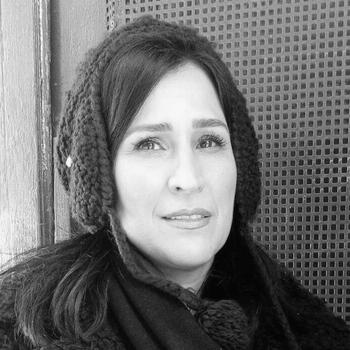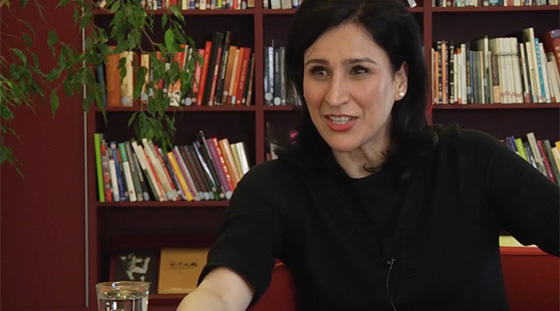Narges Hashempour

Interweaving Performance Cultures
Fellow 2014/15, 2015/16
Scholar, actress, director, writer, curator and dramaturge, Narges Hashempour has been involved in various international theatre projects and festivals since 1991. These include: SALONe TEHERANi. Privates und öffentliches Leben im Iran, (Dresden, 2011); Ich Und… (Berlin, 2008); Songs for Her (Stuttgart and Mühlheim, 2006); Scheherazade im Flughafen (Stuttgart and Pforzheim, 2005); Unwritten Whisper (Tehran, 2003, and Berlin, 2005); The House of Bernarda Alba (dir. Roberto Ciulli, Tehran, Mühlheim, Berlin, Stockholm, Stuttgart, Lièges, 2001); and Nameless Maria (Tehran and, Mühlheim, 2000).
She is the recipient of several prizes, including the 2001 Gordana-Kosanovic-Prize for Outstanding Acting awarded by the Theater a. d. Ruhr in Mühlheim, and numerous academic and artistic grants and fellowships, such as the Erasmus Research Fellowship for her dissertation entitled “Traditional and Modern: Iranian Theatre Culture and Gender Performance” at Freie Universität Berlin (2009-2012); a grant from the International Research Training Group InterArt Studies (2012); and a DAAD (2007) as well as an Akademie Schloss Solitude Fellowship (2005-2006). Hashempour has also been an associated member at the “IZ Geschlechterforschung” at Freie Universität Berlin (2011), a member of the International Research Training Group InterArt Studies (2007) and a member of Iran Theatre House (1999).
Research Project
Female actors in Iran: Political Interweaving Between Resembling and Embodiment
Examining the contemporary form of female actors and femininity on stage will be the focus of my research project. In Iran today, women take on different roles in a variety of plays but have been obliged to be veiled in public since the 1979 revolution. The female actors playing Shen Te in a production of The Good Person of Szechwan, for example, would have to be veiled on stage.
Aesthetically and with regard to its concept, the veil thereby stands in contrast to the concept of the portrayal of femininity as prescribed in the traditional Iranian Shi’a theatre form Ta’ziyeh, which portrays the traditional-religious culture of Iran as an image of the self. Here, women’s roles are performed by men whose bodies are concealed by black veils. The veil represents the role of the female body, which is that of the body hidden in public. At the same time, the veiled female actor on today’s stage also contradicts the aesthetics and concept of the portrayal of femininity in theatre forms that came about through the late nineteenth century encounter between Iranian and European culture. This led to the new acting convention of the unveiled-corporal presence of the female actor embodying her phenomenal body, reflecting the unveiled female corporeality newly emerged in society at the time.
I will investigate the following questions in this research project: Do female actors today represent the interweaving of these two acting cultures in Iranian history? Do they also represent the emergence of a new interweaving between politics and an aesthetics of female corporeality on stage?
Video Interview
Watch a video interview with Narges Hashempour.
Selected Publications
-
Ali Mirsepassi, Political Islam, Iran, and the Enlightenment, Cambridge University Press, 2010.
- Erika Fischer-Lichte, The Transformative Power of Performance: A New Aesthetics, Saskya Iris Jain (trans.), Abington: Routledge, 2008.
- Farhang Rajaee, Islamism and Modernism: The Changing Discourse in Iran, Texas: University of Texas Press, 2007.
- Faegheh Shirazi, The Veil Unveiled: The Hijab in Modern Culture, Florida: University of Florida Press, 2001.
- Peter J. Chelkowski and Hamid Dabashi, Staging a Revolution: The Art of Persuasion in the Islamic Republic of Iran, New York: New York University Press, 2001.

